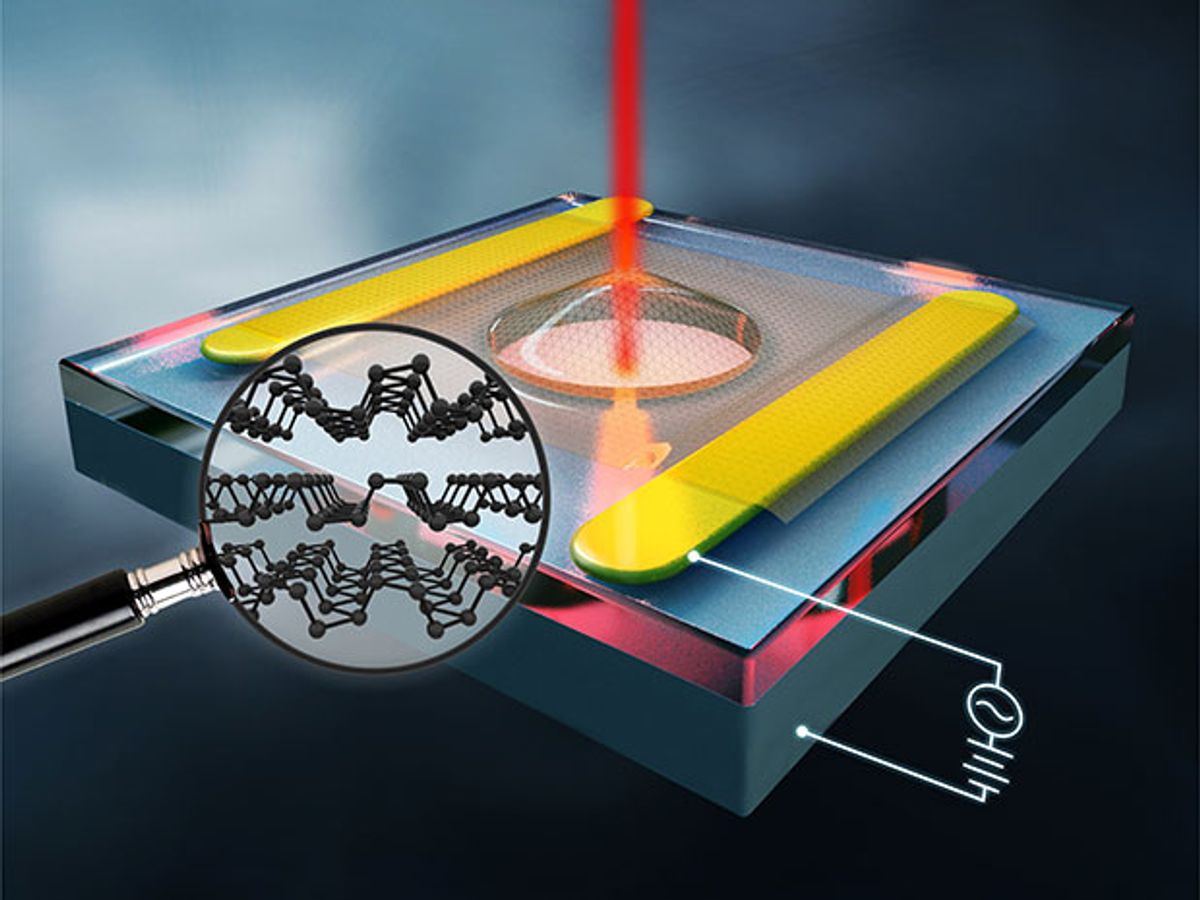Ever since early 2014, when researchers were able to exfoliate black phosphorus into 10- to 20-atom-thick layers, it has been offering a new hope in the universe of silicon replacements. Not only does it have an inherent bandgap unlike graphene, but that bandgap is also highly tunable, depending on the number of layers used.
However, the property that really sets black phosphorus apart from graphene and nearly all two-dimensional materials is its intrinsically strong, in-plane anisotropy. That means its properties are directionally dependent. This in-plane anisotropy is sometimes considered both a blessing and a curse, and being able to control it could go a long way to ensuring it remains a benefit.
Now Philip Feng, whose research into black phosphorus we’ve previously written about in IEEE Spectrum, and his colleagues at Case Western University and the University of Science and Technology in Hefei, China, have shown that the anisotropy can be turned “on” and “off” so that black-phosphorus devices can enjoy the effect only when needed. To do this, Feng and his team had to come up with a new approach to investigating in-plane anisotropy.
In research described in the journal Nano Letters, Feng and his team leveraged a technique known as multimode resonance to investigate one particular anisotropic property of black phosphorus—its mechanical anisotropy (for instance, it is stiffer in one direction than another).
This multimode resonance technique involves the electrical excitation of the black phosphorus crystal and then uses optical detection in the form of interferometry to measure its properties. The technique, according to Feng, exploits the various types of vibrations that occur in microscopic black-phosphorus drumheads of different geometries, such as a circle or a rectangle. This reveals the built-in mechanical anisotropic properties of the material, such as its stiffness.
“The technique also scans across the movable, mechanical device surface, while recording the minute vibrations of the device and spatially mapping out and vividly visualizing the shapes of all the vibrational modes—like literally seeing the multiple vibrations of the drumheads,” explained Feng in an e-mail interview with IEEE Spectrum. “We call this method ‘scanning spectromicroscopy.’ ”
The technique is distinct from the conventional spectroscopy methods in that it does not require polarized light and polarization measurements at various angles, according to Feng. “It does not need a spectrometer...and it is totally independent of conventional methods,” said Feng.
In their measurements, the researchers found that the intrinsic mechanical anisotropy in black phosphorus could to lead to new resonator-based sensors and signal processing devices, which would be otherwise impossible using conventional crystals.
While experimenting with their new measurement tech, the researchers discovered that an electronic signal could tune the effects of mechanical anisotropy on the resonances of nanoresonators made from black phosphorus.
Feng adds:
“This suggests that the effects of mechanical anisotropy in such devices platforms may be switched ‘on’ and ‘off,’ thus the device can enjoy the effects of anisotropy when needed, and in other scenarios, the device may be ‘reconfigured’ to give up the mechanical anisotropy effects and behave just like conventional isotropic crystals.”
Dexter Johnson is a contributing editor at IEEE Spectrum, with a focus on nanotechnology.



